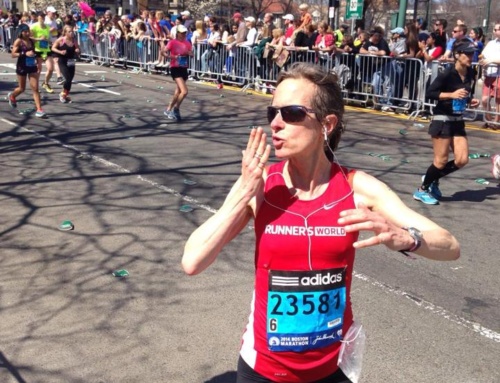
Running isn’t just fresh new shoes and finish lines. Pounding through the miles can lead to all kinds of interesting—and awkward—bodily malfunctions. Adrienne Martini drops in to help with TMI issues for runners and chats with experts with explanation or relief.
Have a TMI issue for runners you’d like her to investigate?
Drop a line here.
QUESTION #2: THICK, BRITTLE, BLACK TOENAILS
A mother runner over on Facebook wonders about her toenails, which are thick and brittle. A few of them are turning black. She has to “carve at them with toenail clippers.” They aren’t painful, she says, but they are ugly. Her fear is that she’s contracted some kind of fungus.
A: Today’s expert is Dr. Stephen Pribut, a podiatrist in Washington, D.C. He recently ran the Marine Corps virtual 10K.
Dr. Pribut has some good news and some not-as-good-but-not-terrible news. First, the good news: It’s likely not a fungus.
“Fungal nails are more yellow and pitted, in addition to often being crumbly. They look different from nails that are turning black,” he says. A fungal infection usually starts with a case of Athlete’s Foot that will find a weak spot in the nail. If the skin on the bottom of your feet or between your toes is peeling, it could be a fungus.
And, now, the not-as-good news. You might need new shoes.
“Black toenails happen because there has been some bleeding underneath the nail,” he says, “and that trauma can cause them to thicken.”
Podiatrists see this frequently: Your foot slides up to the end of your shoe, which puts pressure on the front of the nail and causes the back of the nail to lift. Blood vessels break and—voila —there is bleeding under the nail.

His recommendation is to make sure your shoes fit well length-wise; you want at least a thumb’s width between your longest toe and the end of the shoe.
Then, “tie them securely so that you don’t slide forward in the shoe,” he says. “And you can paint your toenail a pretty color so no one will notice.”
[Related: Why do I get holes in the toes of my running shoes?]
QUESTION #1: POST-RUN SPHINCTER CRAMPS
My—Adrienne’s—TMI question: every now and again, after very long runs, my external anal sphincter cramps. Yes, I get an actual pain in the butt. Before we get to the answer, know that my giant first child was delivered vaginally with forceps and an episiotomy.
A: Today’s professional is Dr. Jocelyn Connolly (a.k.a. The Vagina Doctor). She found her calling as a pelvic floor physical therapist after leaking urine across the back half of her first and only marathon in 2012.
When I called her, some of the first words out of her mouth were, “never is it ever TMI.” Right then, I decided to tell her about my anus. Like one does.
Her answer: There are a lot of trigger points in the rectum and anus that tell us all kinds of information about if we need to poop and how much tone in the muscle is required to keep everything in. Most people don’t even know they are there because they function as they should.
However, when you have a tear or incision, “a lot of those tissues are impacted and are not functioning optimally. It can be so subtle — and our body adapts so that we don’t even notice. Running jostles a lot of the pelvic organs, and depending on the length or the context of the run, you can have an ache there just like anywhere else. Your pelvic floor is part of your deep core, which responds reflexively to keep your spine in a stable position and to absorb some of the forces you’re taking on every time your foot hits the ground.”
The next time it happens, Jocelyn suggest, put on a glove, apply some lubrication, and stick your finger in your anus just up to the first knuckle. There should be a tender spot, which you can press on until it melts.
As for exercises that will keep the pain away permanently, her suggestion is less direct.
“This is an answer no one likes but: no one size that fits everyone. A lot of people jump to the ‘just do Kegels,’ which makes me crazy because you don’t know what’s happening. There could be a muscle group in spasm or scar tissue built up in the area. Continuing to contract those muscles generally instead of knowing what types of specific contractions you need, you could be feeding into the spasm process. There are a lot of sensitive nerves in that area, so if a nerve is being compressed in a part of the pelvis, that could be a part of the issue, too.”
If the issue keeps up, a visit to a pelvic floor physical therapist can definitely be helpful. Find one in your area here.
While it’s reassuring to know that my sphincter is behaving in a predictable way, for me, it happens infrequently enough that I am not inclined to worry about it. But if I disappear after a run with a rubber glove, knock first before entering the room.






Adrienne, I love you for asking this question!! I have been having the same problem for years but never asked a doctor about it because I thought it must be some weird thing with my body. I was seeing an amazing pelvic floor PT before the pandemic, and reading this makes me think I need to go back.
I thought I was the only one! This is yet another reason why we should get this stuff out in the open.
I also have that same issue at times ans am so grateful to hear I am not the only one. Thank you for bringing this out in the open!